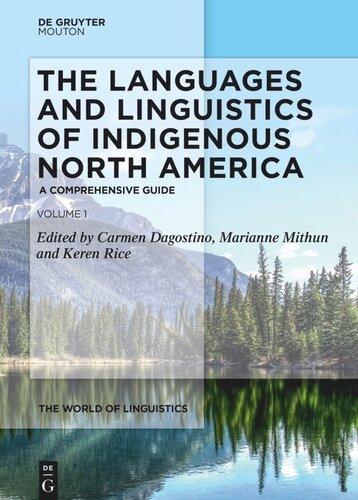

Most ebook files are in PDF format, so you can easily read them using various software such as Foxit Reader or directly on the Google Chrome browser.
Some ebook files are released by publishers in other formats such as .awz, .mobi, .epub, .fb2, etc. You may need to install specific software to read these formats on mobile/PC, such as Calibre.
Please read the tutorial at this link: https://ebookbell.com/faq
We offer FREE conversion to the popular formats you request; however, this may take some time. Therefore, right after payment, please email us, and we will try to provide the service as quickly as possible.
For some exceptional file formats or broken links (if any), please refrain from opening any disputes. Instead, email us first, and we will try to assist within a maximum of 6 hours.
EbookBell Team

4.7
26 reviewsThis handbook provides broad coverage of the languages indigenous to North America, with special focus on typologically interesting features and areal characteristics, surveys of current work, and topics of particular importance to communities. The volume is divided into two major parts: subfields of linguistics and family sketches. The subfields include those that are customarily addressed in discussions of North American languages (sounds and sound structure, words, sentences), as well as many that have received somewhat less attention until recently (tone, prosody, sociolinguistic variation, directives, information structure, discourse, meaning, language over space and time, conversation structure, evidentiality, pragmatics, verbal art, first and second language acquisition, archives, evolving notions of fieldwork). Family sketches cover major language families and isolates and highlight topics of special value to communities engaged in work on language maintenance, documentation, and revitalization.